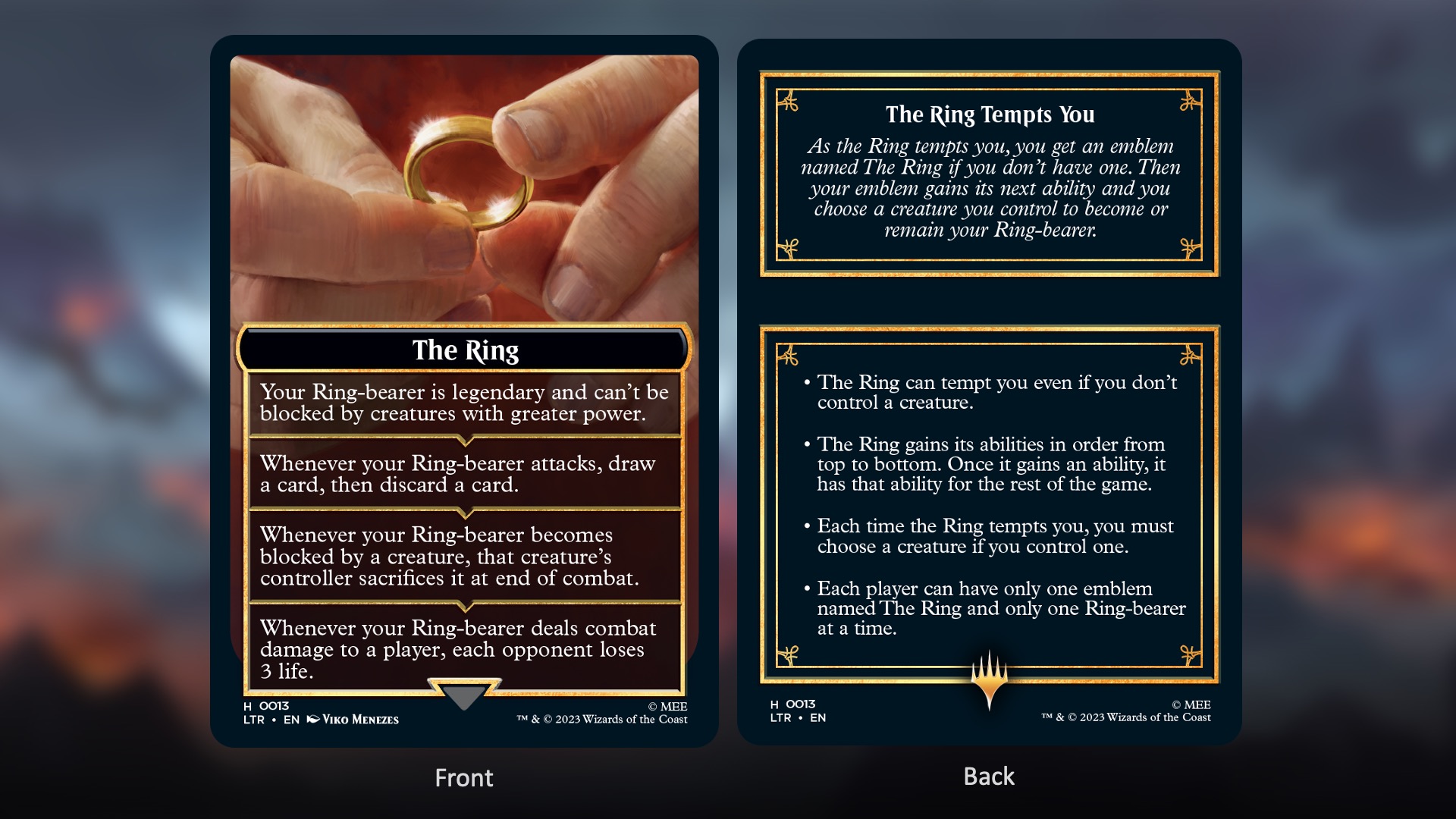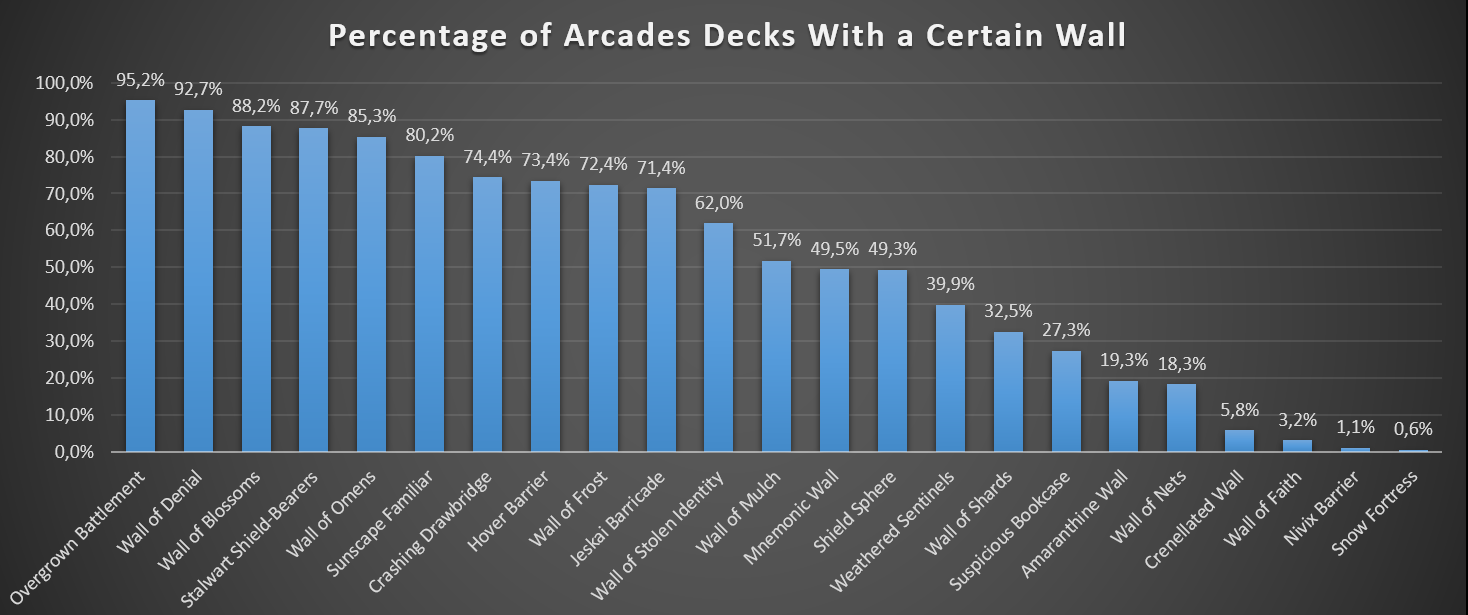Recross the Paths - Arcades, the Strategist

(Arcades, the Strategist | Art by Even Amundsen)
The Ringed City
Hello, everyone, and welcome to back to Recross the Paths, a series that gives commanders a typal twist.
Today's guest is Arcades, the Strategist. Rumor has it that it's been tempted by something and has now decided to enter the fray after comfortably sitting behind some Walls for far too long.
Step One: The Deck
Our Dragon general really likes to surround itself with creatures with Defender, whose baseline is to be excellent blockers. Nonetheless, Arcades is able to transform them into true value engine: first, making us draw cards whenever we deploy one, then allowing us to use them to swing and threaten our opponents' life total.
Stage One: The City Walls
Of course, the go-to creature type when building a Defender deck is Wall. This is not innovative at all, given how much Arcades pushes us towards this direction, but trust me, we'll get to the interesting twist soon.
Talking more about the creatures we run; I was actually surprised to see the versatility Wall creatures can display on the battlefield and in our deck. In fact, other than getting our hands on simple high-toughness creatures, such as Shield Sphere or Wall of Shards, we also get access to a vast array of different combat effects.
For example, Crashing Drawbridge and Suspicious Bookcase help us on the offensive side, while Wall of Frost and Wall of Nets shine when used as blockers.
Even more so, Wall of Omens and Wall of Blossoms let our cards flow, while Jeskai Barricade and Nivix Barrier get the work done as unexpected instant-speed creatures.
Lastly, Wall of Denial, Amaranthine Wall and Wall of Stolen Identity are great offensive tools. They can either count on built-in protection or straight up become a copy of the best creature on the battlefield (while also preventing the original one from attacking).
Stage Two: Piertotum Locomotor
We always want to run a number of effects that are redundant with our commander's abilities, as they are a sort of insurance in case it gets removed. In this regard, Assault Formation, High Alert and Huatli, the Sun's Heart all assure our creatures can use their toughness to deal damage, even though one of these cards shines much brighter than the other two. In fact, while Huatli is useful only thanks to her static ability and Assault Formation requires quite a lot of mana to fully take advantage of its abilities, High Alert does everything we want and need it to do, with the added bonus of an untapping ability.
Moreover, we can also count on other effects that reward us for playing Walls. Sight of the Scalelords is a powerful complementary tool which makes our creatures much scarier once we're able to attack with them.
Towering Titan is an impressive body and it also comes with the constant threat of giving our creatures trample.
Last but not least, Ulvenwald Observer makes sure we are getting something out of our creatures even when they're inexplicably heading for the graveyard.
Stage Three: Protect the City
I didn't really include a lot of removal, but the ones I decided to play are very powerful in this shell. Fell the Mighty is basically a one-sided board wipe that leaves our creatures untouched while removing all (or at least most) of our opponents' board presence.
Dusk // Dawn gets the work done on multiple levels. In fact, it starts by removing most of other players' threats, but it also works as a massive reanimation spell that can get our Walls out of graveyards.
Farewell is our reset button, and we want to push it as soon as our opponents get a little too comfortable with their board presence. It can be used as targeted removal in extreme cases, but we mostly want to use it as a large-scale sweeper.
Stage Four: The Hidden Treasure
Up until now, the deck is a pretty straightforward Arcades one, with a certain density of Defender creatures and multiple ways to transform them into actual threats. But, as I promised before, there actually is a twist in all of this. In fact, the recently-dropped The Lord of the Rings: Tales of Middle-earth expansion gave us a new mechanic: The Ring tempts you.
While all the effects The Ring comes with are intriguing, the one I'm mostly interested in is the first. In fact, while it's true that Arcades allows our creature to attack and deal damage, their power actually remains zero. This means that, once we get tempted just one time, we'll always be able to have one unblockable creature on our side of the battlefield.
What's interesting to note is that, once we get tempted four times, all the other cards that do the same actually don't become useless. In fact, while they won't grant us any additional effects, they allow us to choose a different Ring-bearer, meaning we can move these bonuses on the creature that is best suited to carry them at any given moment. This also means we can include a high number of cards with this mechanic, so that we're better able to get to the fourth ability as quickly as possible without having to worry about drawing several of them.
Furthermore, we can pair almost any effect with the tempt. Do you need protection? Bombadil's Song, Glorious Gale and Slip On the Ring are ready to get the job done.
Do you need a way to tempt multiple times with just one card? Look no further than Frodo Baggins, Elrond, Lord of Rivendell and Dúnedain Rangers.
Do you simply want to get value alongside being tempted? Boromir, Warden of the Tower, Scroll of Isildur and War of the Last Alliance are here for you.
Step Five: The Complete Decklist
Stage Two: The Data Room
We're now on to the final part of this deck tech: the data room. Was this deck idea actually unique? Let's compare this list against both the average Arcades deck and the average Wall deck to see what we gained (and lost) in the process.
Step One: The Average Arcades Deck
When it comes to Bant commanders, Arcades is the cream of the crop. In fact, it's by far the most popular in this color combination, with 11,382 decks registered on EDHREC, meaning it's the 20th most played overall.
But, do people actually like to play Walls with this commander? Or do they prefer other kinds of Defender creatures?
Looking at the numbers, it's clear that the creatures we play are pretty much the same as other Arcades decks. In fact, 12 out of the 23 Walls we run are also played in more than 50% of other lists, and two more are just below this mark.
Nonetheless, I was pretty surprised to see Amaranthine Wall and Wall of Nets being played in less than 20% of the decks. While neither of these results is particularly groundbreaking, they're both pretty difficult to deal with nonetheless; the first can rely on cheap built-in protection, and the latter is a repeatable Journey to Nowhere-on-a-stick that our opponents will need to spend a removal spell on more often than not.
All in all, I didn't expect them to be included in the vast majority of the decks. But if simple redraw effects like Wall of Blossoms or Wall of Omens are almost always present in these lists, then they should definitely be played more often.
Step Two: The Average Walls Deck
To no one's surprise, Arcades is the most popular Wall commander, with 5,156 decks centered around this creature type. The average Arcades Walls list is pretty different from the one I presented you today, so let's see what these discrepancies are.
The first difference we can see between this deck and the one I built is the non-Wall creatures. On one hand, my list limited them to strictly synergistic ones, such as Towering Titan, or tempting ones, such as Took Reaper. On the other hand, the average deck seems a bit all over the place. While it features some powerful thematic inclusions, such as Tetsuko Umezawa, Fugitive or Wingmantle Chaplain, it still shares some features of a generic Defender deck, including creatures like Flumph and Sylvan Caryatid
Regarding the actual Walls, some choices left me a bit puzzled. Creatures like Steel Wall, Fortified Rampart or Wall of Junk (which either don't have any ability or actually punish you for blocking with them/using them as an actual Wall) are to me unreasonable inclusions when strictly better creatures like Amaranthine Wall or Wall of Nets are nowhere to be seen.
As far as the rest of the deck is concerned, I can say including Ring-related cards came at the price of cutting some very powerful additions. Staples such as Swords to Plowshares, Beast Within or Akroma's Will would easily fit in the list if we wanted to avoid including The Lord of the Rings cards. On the same note, Slaughter the Strong could be a third powerful wrath effect. Meekstone would be an excellent inclusion if we don't mind our opponents getting salty.
Lastly, I'm not a fan of the one-shot toughness-boosting effects. Cards like Tower Defense or Bar the Door don't seem worth it to me. They may grant some lethal swings when we want to attack, but they could also easily be one of our worst draws in a different game state. The same goes for Stoneskin, which could be a somewhat useful combat trick but still seems to me as a bit of a wasted slot. Instead, I would happily add the 34th (or even 35th) land for more consistency with our land drops, as our commander is very likely to be removed too often, and we want to have it on the battlefield as much as possible.
Takeaways From Today's Article
- Walls as a typal strategy suffers from the lack of powerful, synergistic creatures. This may sound strange, but I was actually struggling to find creatures worth playing while building the deck and I had to settle for suboptimal choices in order to actually build the deck around this creature type;
- Arcades is a very interesting commander that still grants room for innovation. In fact, while being extremely popular, it still feels like a fresh, unexplored option. Nonetheless, as said before, some more support for Walls as a creature type is needed to allow this dragon to finally do away with generic defender cards;
- The Ring is an interesting mechanic, but it is far less powerful in a multiplayer context. The looting effect is perhaps the most useful one, as dealing 3 damage isn't really going to make a difference when the starting life total is 40. Yet, pairing it with 0-power creatures means they basically become unblockable, which isn't anything crazy but it still sounds fun to build around.
That’s all from me for the moment! I hope you enjoyed this deck tech, but now it’s on to you! What do you think of it? Would you have changed anything? Is there something you particularly liked about it? Let me know in the comments below!


EDHREC Code of Conduct